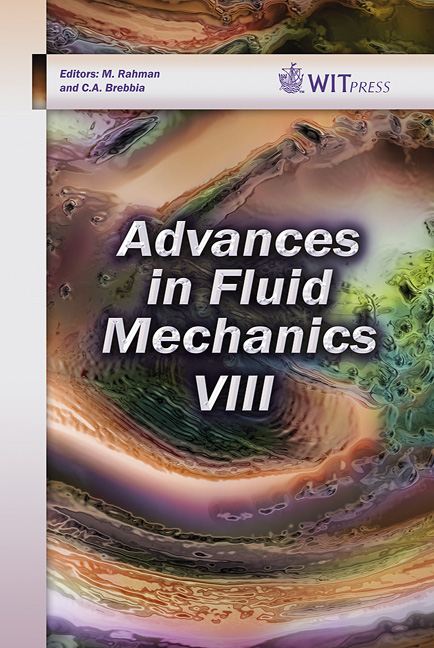Dam Break Smoothed Particle Hydrodynamic Modeling Based On Riemann Solvers
Price
Free (open access)
Transaction
Volume
69
Pages
12
Page Range
145 - 156
Published
2010
Size
2970 kb
Paper DOI
10.2495/AFM100131
Copyright
WIT Press
Author(s)
L. Minatti & A. Pasculli
Abstract
The Smoothed Particle Hydrodynamic (SPH) method, originally developed during the 1970s to solve astrophysical problems, has shown many attractive features that have led many authors to try to use it to solve fluid flows problems. Its free surfaces tracking capabilities and its straightforward implementation of multi-materials interactions make it well suited for complex flows modeling. The first part of the paper is devoted to a general overview of the method. In particular, a brief description of a recently proposed flux term, implemented in this paper, is introduced. The addition of the flux terms, based on a Riemann solvers approach, enhances the stability and smoothness of field variables, leading to more accurate pressure fields. In order to test the effectiveness of the selected approach, in the second part of the paper, the Dam break problem is discussed. Furthermore, the classical Poiseuille flow problem is considered as well. The numerical results are very satisfactory, exhibiting the effectiveness of the implemented approach regarding, at least, the selected kind of problems. Keywords: SPH method, Riemann solvers, Dam break Poiseuille flow. 1 Overview of the SPH method The Smoothed Particle Hydrodynamic (SPH) method is a numerical technique that was initially developed during the 1970s to solve astrophysical problems (Monaghan [1]). It is a fully meshless particle method that is easy to code. Its meshless and Lagrangian nature make it very attractive for solving fluid flow problems where free surface boundary conditions and large strain rates may be
Keywords
SPH method, Riemann solvers, Dam break Poiseuille flow





